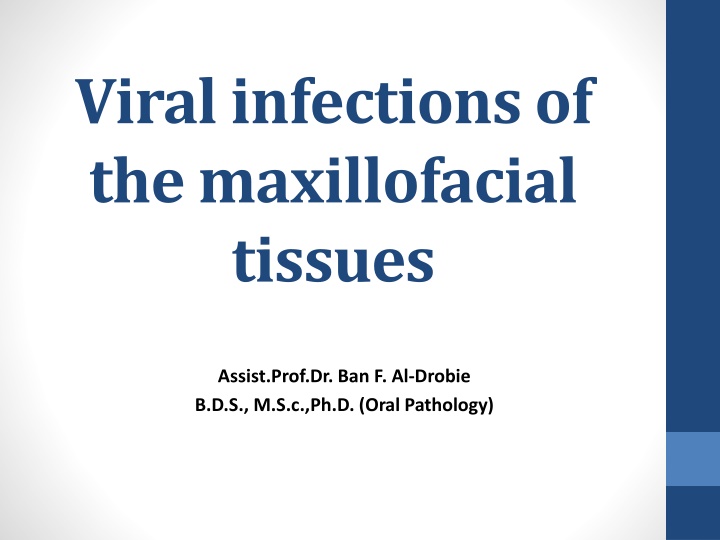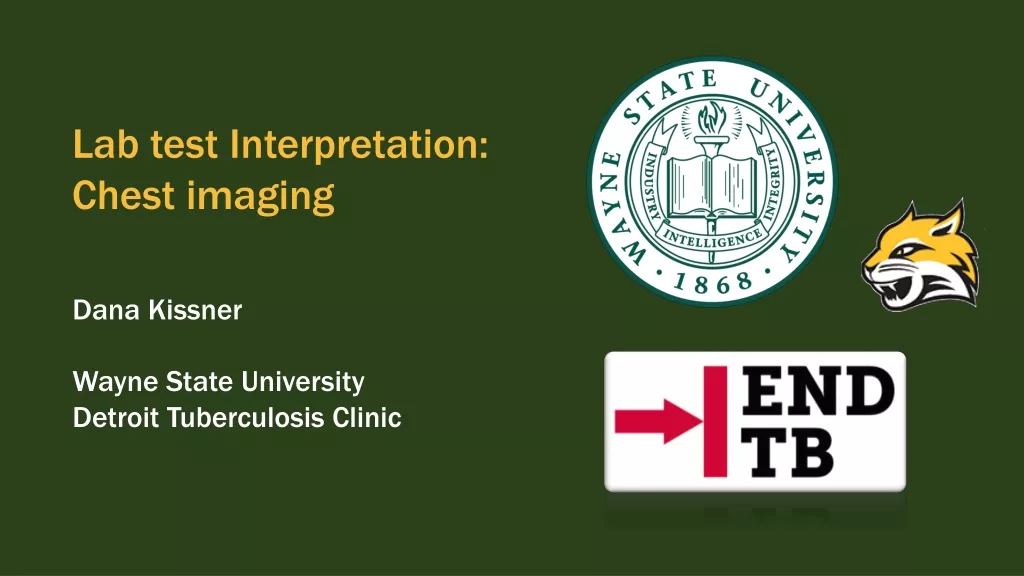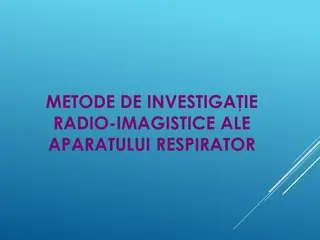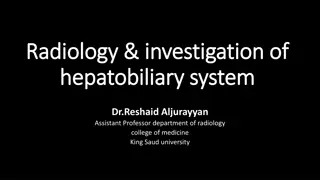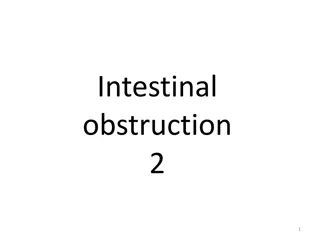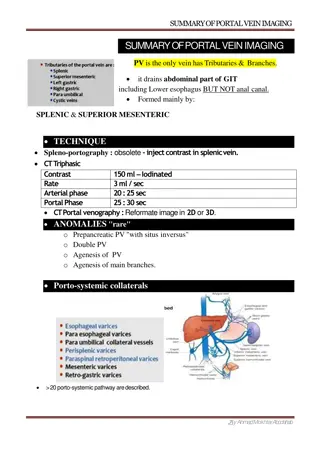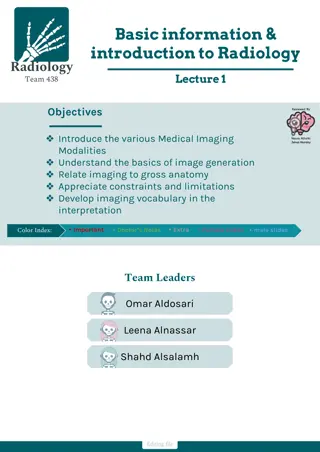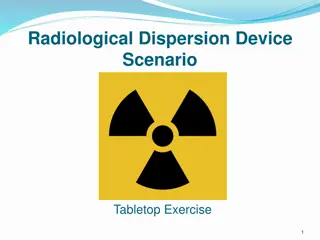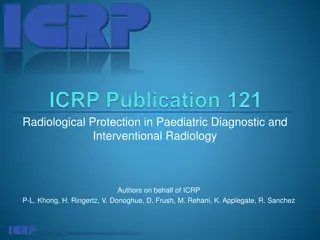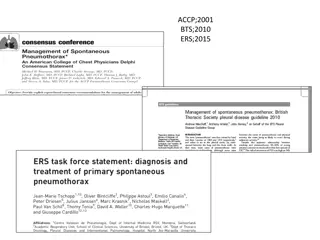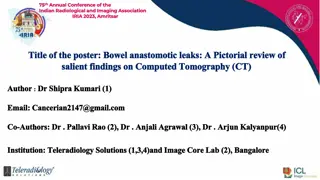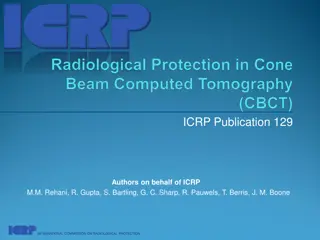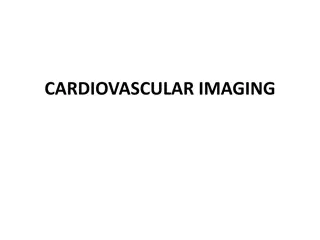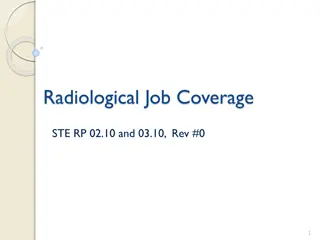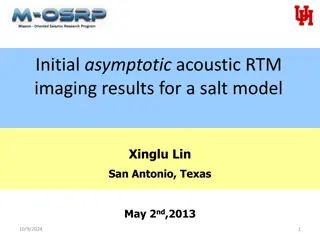Radiological Findings and Techniques in Chest Imaging
Techniques like Plain Chest X-ray, CT Scan, MRI, and more are used to identify diseases and abnormalities in chest radiology. Understanding normal neonatal chest X-rays, recognizing tubes and catheters in acutely ill neonates, and complications like malposition of nasogastric tubes and vascular catheters are important aspects of interpreting chest radiological findings.
Download Presentation

Please find below an Image/Link to download the presentation.
The content on the website is provided AS IS for your information and personal use only. It may not be sold, licensed, or shared on other websites without obtaining consent from the author.If you encounter any issues during the download, it is possible that the publisher has removed the file from their server.
You are allowed to download the files provided on this website for personal or commercial use, subject to the condition that they are used lawfully. All files are the property of their respective owners.
The content on the website is provided AS IS for your information and personal use only. It may not be sold, licensed, or shared on other websites without obtaining consent from the author.
E N D
Presentation Transcript
Viral infections of the maxillofacial tissues Assist.Prof.Dr. Ban F. Al-Drobie B.D.S., M.S.c.,Ph.D. (Oral Pathology)
A wide spectrum of viral infections can affect the mouth and allied structures. In most instances, these give rise to short- term local illness (e.g., herpes simplex infections in immunocompetent hosts); however, infections such as Human Immunodeficiency viruses (HIV), Epstein Barr virus (EBV), and the oncogenic types of Human Papillomavirus (HPV) can cause significant orofacial disease that will increase patient morbidity and possibly lead to early death. The epidemiology of viral infections is ever changing; hence, health care providers are encouraged to maintain knowledge of virally driven infections that may impact upon the health and clinical care of their relevant specialty.
Viral infectoionsof the maxillofacial region Herpes simplex virus Varicella -zoster virus Herpangina Hand-foot-mouth disease Measles (Rubeola) and German measles (Rubella) Infectious mononucleosis Cytomegalovirus Mumps human immunodeficiency virusand acquired immunodeficiency syndrome
Herpes simplex virus Herpes simplex virus two forms: primary (systemic) and secondary (localized) Both forms are self-limited, but recurrences of the secondary form are common Physical contact with an infected individual or with body fluids is the typical route of HSV inoculation and transmission. During the primary infection, only a small percentage of individuals show clinical signs and symptoms of infectious systemic disease, whereas a vast majority experience only resolution of primary herpetic gingivostomatitis, the virus is believed to migrate, through some unknown mechanism, to the trigeminal ganglion. Reactivation of virus may follow exposure to sunlight ( fever blisters ), exposure to cold ( cold sores ), trauma, stress, or immunosuppression causing a secondary or recur rent infection. subclinical disease. After
Clinical features Primary Herpetic Gingivostomatitis.: usually seen in children, although adults who have not been previously exposed to HSV may be affected. The vesicular eruption may appear on the skin, vermilion, and oral mucous membranes. Intraorally, lesions may appear on any mucosal surface. This is in contradistinc tion to the recurrent form of the disease, in which lesions are confined to the lips, hard palate, and gingiva. The primary lesions are accompanied by fever, arthralgia, malaise, anorexia, headache, and cervical lymphadenopathy. lesions heal without scar formation after about 7-10 days By this time, the virus may have migrated to the trigeminal ganglion to reside in a latent form
represents the reactivation of latent virus. Antibodies to HSV are present in a large majority of the population. Patients usually have prodromal symptoms of tingling, burning, or pain in the site at which lesions will appear. Within a matter of hours, multiple fragile and short-lived vesicles appear. These become unroofed and unite to form maplike superficial ulcers. The lesions heal without scarring in 1 to 2 weeks and rarely become secondarily infected. Regionally, most secondary lesions appear on the vermilion and surrounding skin. This type of disease is usually referred to as herpes labialis. Intraoral recurrences are almost always restricted to the hard palate or gingiva.
Varicella-zoster virus infection Primary varicella-zoster virus (VZV) infection is known as varicella or chickenpox; secondary or reactivated disease is known as herpes zoster or shingles Varicella is transmitted predominantly through the inhalation of contaminated droplets. The condition is very contagious.
Varicella Fever, chills, malaise, and headache may accompany a rash that involves primarily the trunk and head and neck. The rash quickly develops into a vesicular eruption that becomes pustular and eventually ulcerates. The infection is self-limiting and lasts several weeks. Oral mucous membranes may be involved in primary disease and demonstrate multiple shallow ulcers that are preceded by vesicles.
Herpes zoster condition of the older adult population and compromised immune responses. The sensory nerves of the trunk and head and neck are commonly affected. Involvement of various branches of the trigeminal nerve may result in unilateral oral, facial, or ocular lesions. Involvement of facial and auditory nerves produces the Ramsay Hunt syndrome, in which facial paralysis is accompanied by vesicles of the ipsilateral external ear, tinnitus, deafness, and vertigo.
After several days of prodromal symptoms of pain and/or paresthesia a well-delineated unilateral maculopapular rash appears accompanied by systemic symptoms. The rash quickly becomes vesicular, pustular, and then ulcerative. Remission usually occurs in several weeks Treatment: For varicella in normal individuals, supportive therapy is generally indicated. for immunocom promised patients, systemically administered acyclovir, vidarabine, and human leukocyte interferon. Corticosteroids generally are contraindicated
Herpangina Herpangina is an acute viral infection caused by Coxsackie type A virus. It is transmitted by contaminated saliva and occasionally through contaminated feces. Clinical Features Herpangina is usually endemic It is more common in children than in adults. complain of malaise, fever, dysphagia, and sore throat after a short incubation period. Intraorally, a vesicular eruption appears on the soft palate, faucial pillars, and tonsils and persists for 4 to 6 days. A diffuse erythematous pharyngitis is also present. No associated skin lesions are typically seen.
Because herpangina is self-limiting, is mild and of short duration, and causes few complications, treatment usually is not required.
Hand-Foot-and-Mouth Disease HFM disease is a highly contagious viral infection caused by Coxsackie type A16 or enterovirus 71. transferred through airborne spread or fecal-oral contamination. Clinical Features: typically occurs in epidemic or endemic (about 90%) affects children younger than 5 years of age. After a short incubation period, the condition resolves spontaneously in 1 to 2 weeks.
Signs and symptoms mild to moderate , low-grade fever, malaise, lymphadenopathy, and sore mouth. Pain from oral lesions is often the patient s chief complaint. Oral lesions begin as vesicles quickly rupture to become ulcers. Lesions can occur anywhere in the mouth. Multiple maculopapular lesions, typically on the feet, toes, hands, and fingers, appear concomitantly with or shortly after the onset of oral lesions. These cutaneous lesions progress to a vesicular state; they eventually become ulcerated. Because of the relatively short duration, generally self-limiting nature, and general lack of virus-specific therapy, treatment for HFM disease is usually symptomatic
Measles (Rubeola) and German measles (Rubella) Measles is a highly contagious viral infection ,caused by a member of the paramyxovirus family of viruses. oral eruptions consist of early pinpoint elevations over the soft palate German measles, or rubella, is a contagious disease ,caused by an unrelated virus of the togavirus family. It shares some clinical features with measles, such as fever, respiratory symptoms, and rash. However, these features are very mild and short lived in German measles.
Clinical Features. After an incubation period of 7 to 10 days, prodromal symptoms of fever, malaise, coryza, conjunctivitis, photophobia, and cough develop. In 1 to 2 days, pathognomonic small erythematous macules with white necrotic centers appear in the buccal mucosa, these lesion as Koplik s spots. precede the skin rash by 1 to 2 days. The rash initially affects the head and neck, followed by the trunk, and then the extremities
Treatment. No specific treatment for measles is known. Supportive therapy of bed rest, fluids, adequate diet, and analgesics generally suffices
